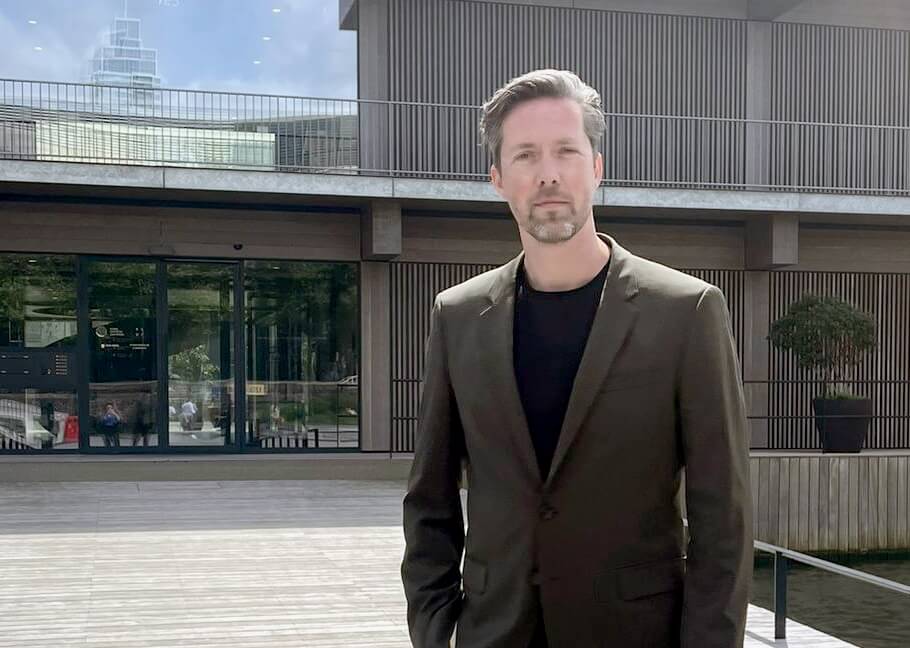From promise to integrated architectural icon
So how did the Floating Office come about and what are the main innovative aspects? Stefan: “The Floating Office Rotterdam perfectly illustrates how the city of Rotterdam is working on creative and progressive solutions in the field of climate adaptation. It all started with a promise by the mayor to create a floating headquarters for the UN GCA. You only come up with ideas like that if there is a breeding ground for new and innovative ideas. With this in mind, we set out to make it happen. From the start we thought in an integral way, to bring together architecture, feasibility, (construction) speed and sustainability. We are also a very practical, hands-on firm and believe in integrated design, where we bring design and technical development together.”
Photo: A watertaxi sailing to a stop near Floating Office Rotterdam. (c) Iris van den Broek












